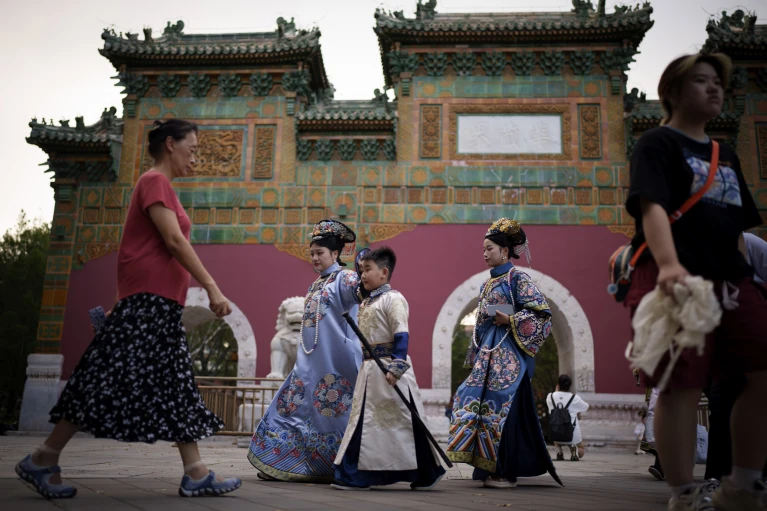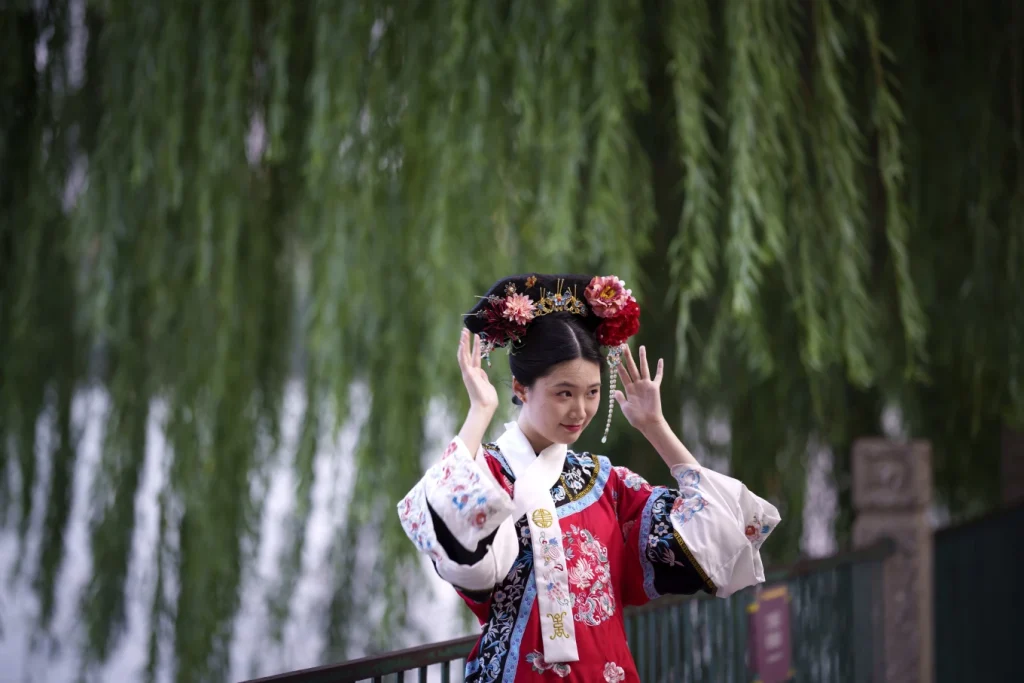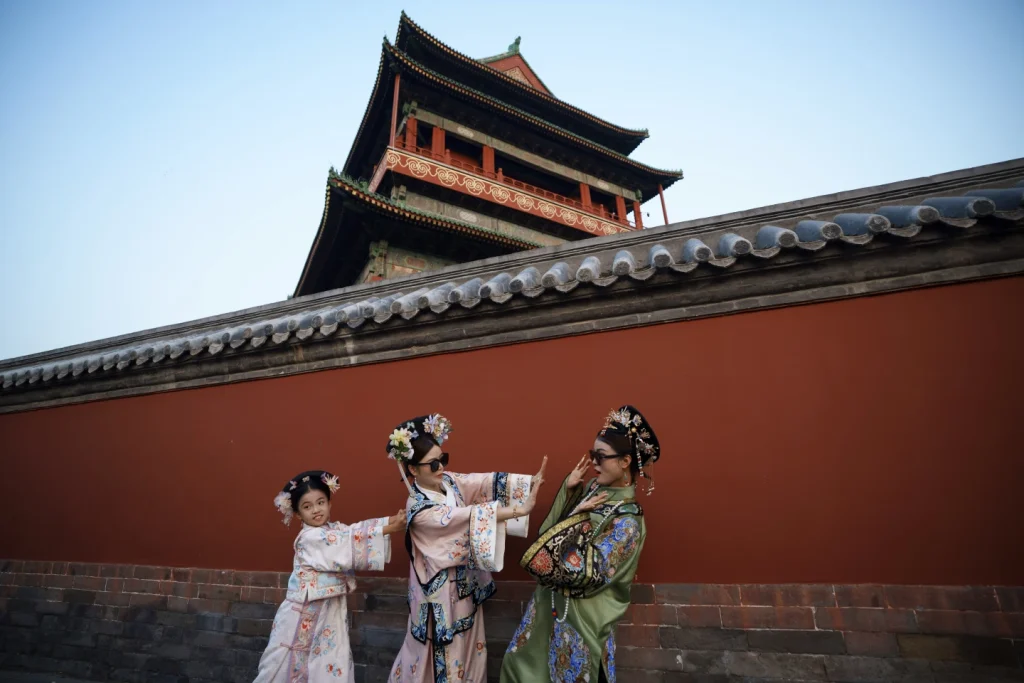In the heart of Beijing, the grandeur of the Forbidden City, once the resplendent palace of the Ming and Qing emperors, now serves as a canvas for a unique cultural phenomenon.
Streams of visitors, clad in historical costumes reminiscent of the imperial era, pose for portraits against the backdrop of this architectural marvel.
This trend, echoing the fervor of comic book conventions and the Japanese tradition of cosplay, transcends mere entertainment; it embodies a profound reconnection with China’s rich cultural heritage and the complexities of its historical narrative.
The costumes worn by these visitors, while not always historically accurate, draw inspiration from the intricate artistry of Chinese painting, theater, and the rich textile traditions of the Qing Dynasty.
This period, spanning from 1644 to 1912, is often celebrated for its cultural advancements and economic prosperity, driven by flourishing trade in silk and porcelain.
The elaborate silk robes adorned with meticulous embroidery, along with the ornate hairpieces encrusted with flowers, pearls, and gemstones, reflect the aesthetic values of an era when art and fashion were inextricably linked to social status and cultural identity.
The fall of the Qing Dynasty in 1911 marked a significant turning point in Chinese history. The subsequent decades were characterized by turmoil and warfare, culminating in the establishment of the People’s Republic of China in 1949.
The Communist Party’s rise to power heralded a systematic effort to dismantle the remnants of China’s imperial past, as revolutionary ideologies sought to forge a new national identity.
However, in recent years, there has been a notable shift in this narrative. As China has embraced economic prosperity and a more nuanced understanding of its history, the public’s fascination with the imperial era has flourished.
This cultural renaissance is not merely a nostalgic longing for the past; it is also a manifestation of national pride and identity.
The rise of popular historical dramas and the pervasive influence of social media have fueled this trend, allowing individuals to engage with their heritage in innovative ways.
Unlike the battle reenactments popular in the West, this phenomenon is characterized by a celebration of historical aesthetics and cultural narratives.
Participants often draw inspiration from characters in classical novels, plays, and poems, creating a rich tapestry of cultural references that resonate with contemporary audiences.
The scene at the Forbidden City, particularly during late summer and early fall, is nothing short of a vibrant tableau.

Families, friends, and couples gather along the scenic moat, surrounded by weeping willows and the changing hues of autumn. Professional and amateur photographers alike seize the moment, capturing the essence of this cultural revival.
The atmosphere is electric, as participants, despite the sweltering heat, immerse themselves in the experience of embodying historical figures.
Each pose, prop, and camera angle is meticulously curated, transforming the act of photography into a performative art form that bridges the gap between past and present.
This phenomenon also highlights the democratization of cultural expression in contemporary China. With the availability of rental costumes and the accessibility of makeup and hairstyling services, individuals from diverse backgrounds can partake in this celebration of heritage.
The sight of students from elite institutions like Tsinghua University donning imperial garb to commemorate their academic achievements underscores the intersection of tradition and modernity in contemporary Chinese society.
These moments of collective participation foster a sense of community, as individuals bond over their shared appreciation for history and culture.
Moreover, the act of dressing in historical costumes serves as a form of escapism, allowing participants to momentarily transcend the challenges of everyday life.
In a rapidly modernizing society, where the pressures of work and social expectations can be overwhelming, the opportunity to embody royalty, even if just for a fleeting moment, offers a reprieve from the mundane.

This interplay between fantasy and reality resonates deeply with individuals seeking to explore their cultural roots while navigating the complexities of modern existence.
In conclusion, the phenomenon of historical cosplay in China, particularly in iconic locations like the Forbidden City, represents a multifaceted cultural revival. It reflects a growing respect for China’s rich historical tapestry, allowing individuals to engage with their heritage in meaningful ways.
As participants don the elaborate costumes of the Qing Dynasty, they not only celebrate a bygone era but also contribute to a broader narrative of national identity and cultural appreciation.
This resurgence of interest in historical aesthetics serves as a reminder of the enduring power of culture to connect individuals across time, fostering a sense of belonging and pride in a rapidly changing world.
Through this lens, the past is not merely a relic to be observed; it becomes a living, breathing part of the present, inviting all to partake in the rich legacy of Chinese history.
